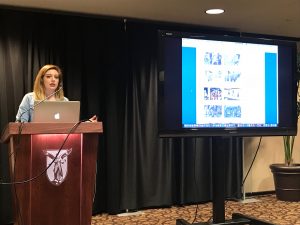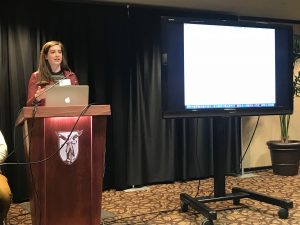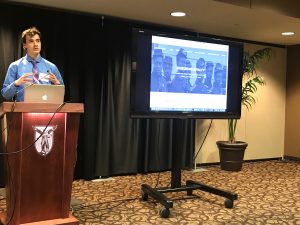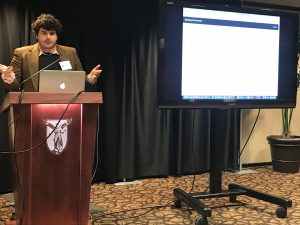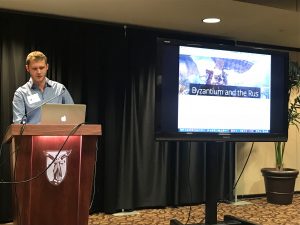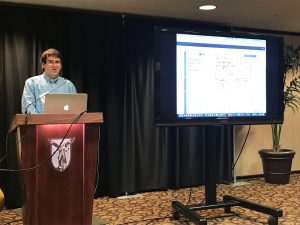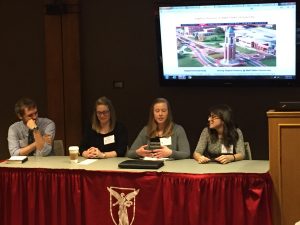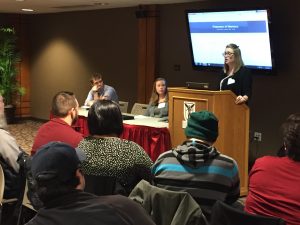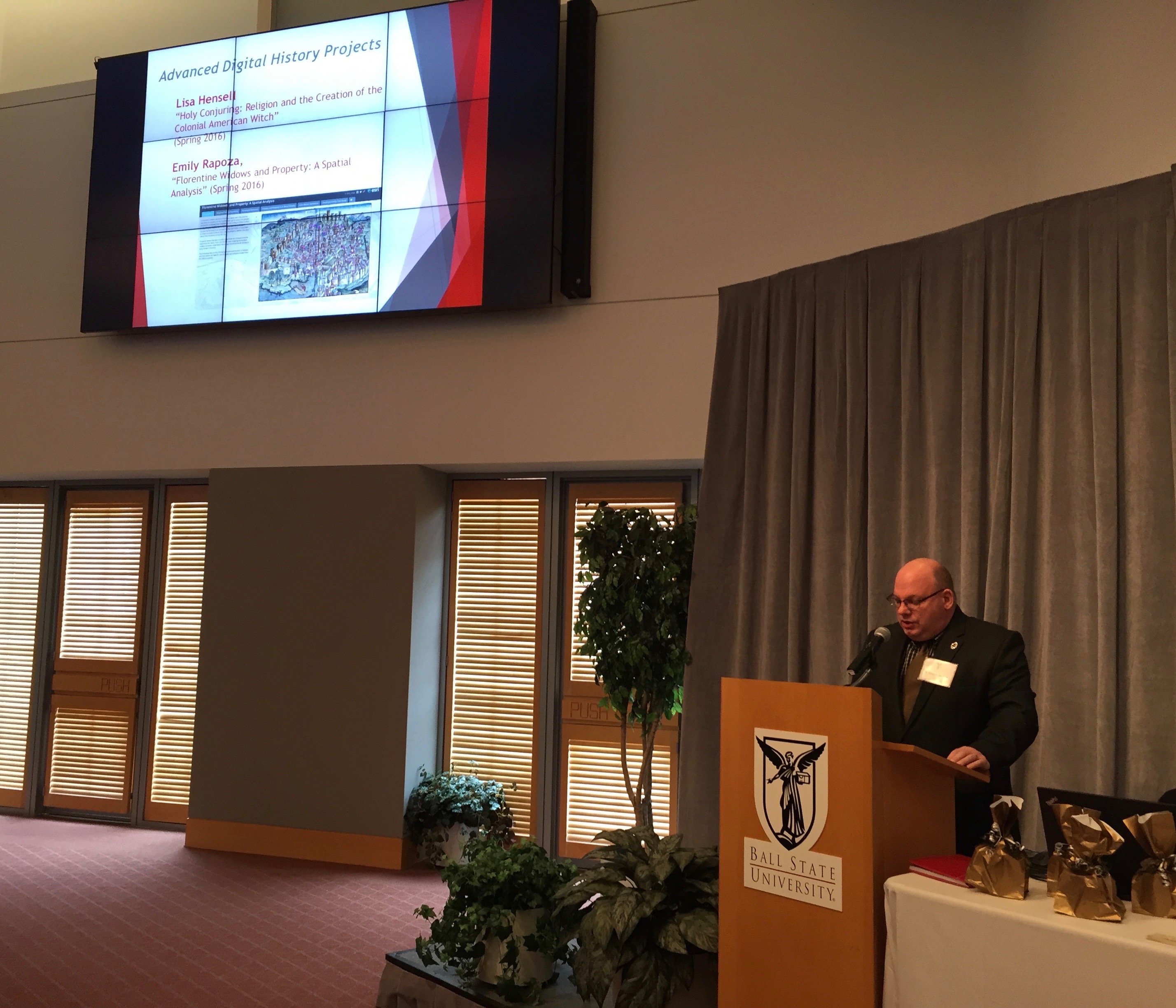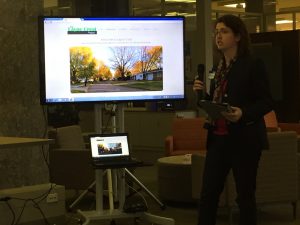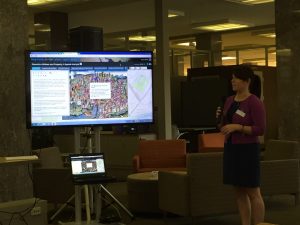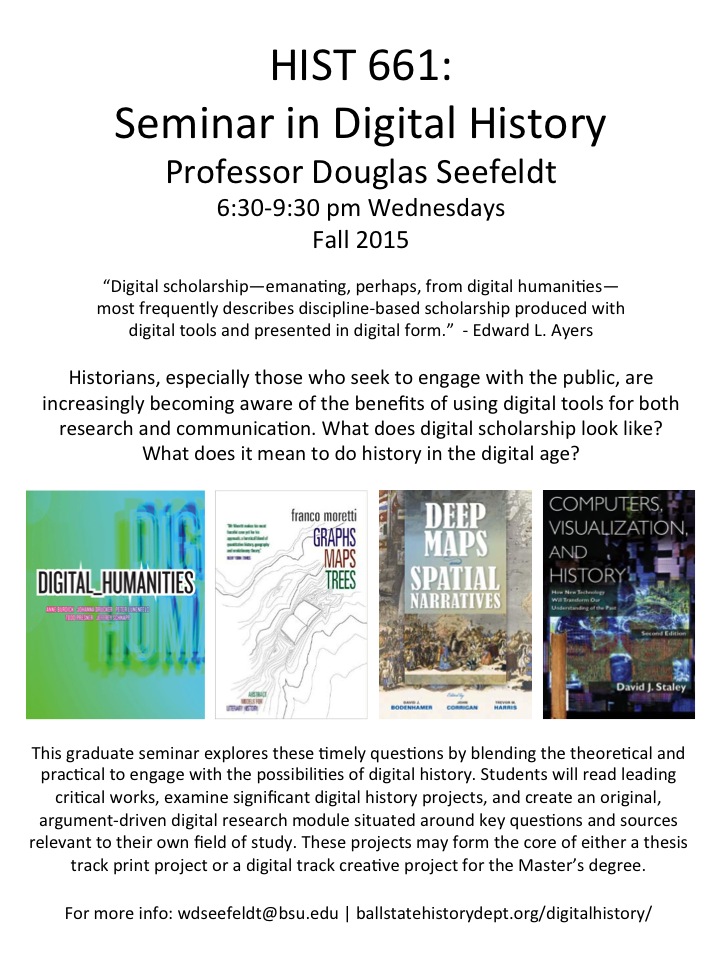In November of 2019, I was contacted by Sandy Hausman of National Public Radio affiliate WVTF to react to a then-brewing controversy in Charlottesville, Virginia over the depiction of Sacagawea–the Native American woman who guided the Lewis and Clark expedition across much of the Rocky Mountain West–in a 1919 sculpture commemorating the local leaders of the Corps of Discovery situated conspicuously in the middle of a downtown street. According to Hausman, “City leaders in Charlottesville, Va., will remove a statue of Lewis and Clark because their guide, Sacagawea, is portrayed as weak. They will replace it with one that highlights her importance.” My brief contribution to the “In Virginia, Sacagawea Gets Her Own Statue,” begins around 2:00. While a post-doc at UVa, I directed the Lewis and Clark Bicentennial project from 2002-04. During that time I taught my first digital history courses to undergraduate in the Media Studies program. One of the early student projects from the fall 2002 semester, “Lewis and Clark: Nostalgia and the Frontier,” included an examination of Charles Keck’s sculpture commissioned by Paul Goodloe McIntire. The students, Stephen Coleman, Lisa Jensen, and Katherine Schumann, created a small thematic research collection that they divided into four sections: Description, Construction, Dedication, and Reaction. It is from this collection that the passage I read in the NPR story by Keck on the composition of his sculpture comes from.
Category Archives: Digital History
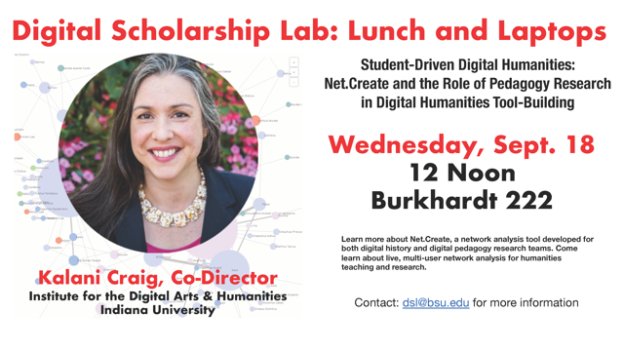
DSL Lunch and Laptops: Net.Create with Kalani Craig
Kalani Craig, Indiana University, “Student-Driven Digital Humanities: Net.Create and the Role of Pedagogy Research in Digital Humanities Tool-Building,” Wednesday, September 18, at 12:00 noon in Burkhardt 222.
Digital humanities scholars regularly incorporate practices from informatics, computer science, and data science as we build our research agendas and develop our tools. We then draw on these interdisciplinary research practices to shape our students’ classroom encounters with digital humanities, but how often do we systematically draw on student experiences to shape our research practice?
Kalani Craig, Co-Director of the Institute for Digital Arts and Humanities, will document the development and use of Net.Create, a network analysis tool developed for both digital-history and digital-pedagogy research teams. Her presentation will explore the effects of student learning outcomes on the network-theoretical and digital-history-methods principles for history research teams. Immediately following the talk, those in attendance can spend a few minutes with the Net.Create tool in a hands-on activity that demonstrates those principles in action.
Bring your lunch and your laptop (or tablet) to learn more about this innovative approach to live, multi-user network analysis for humanities teaching and research. The event is co-sponsored by the Ball State University Digital Scholarship Lab and the Department of History.
Digital History Panel at Ball State University Student History Conference
I chaired a panel at the 21st Annual Department of History Student History Conference on Friday, February 23, 2018 at Ball State University titled, “Doing Digital History.” The panel included current M.A. students Nate Adams, Katy Evans, Anna Kinnen, Jake Klinger, Frank Lacopo and Brendan White presenting their digital history research projects from my HIST 661: Digital History Seminar along with graduate alumnus Hayden Shaw presenting his CRPR 698: Creative Project in a 6-minute lightning round format.
- Nate Adams, “Forgotten Saddles”
- Katy Evans, “Construyendo la Mujer Nueva: The Image of the Revolutionary “New Woman” in Mexico and Nicaragua during the Global Sixties”
- Anna Kinnen, “To Condemn or to Praise: A Digital Analysis of Seventeenth-Century Funeral Sermons Regarding Women”
- Jake Klinger, “Ensuring Loyalty: How Black Recruitment Impacted Kentucky During the American Civil War”
- Frank Lacopo, “Speaking of Conversion: Tracing the Roman Casa dei Catecumeni, c.1500-c.1600”
- Hayden Shaw, “Following the Raven Banner”
- Brendan White, “Ball Workers in Muncie, 1888 to 1929”
The panel had comment from Professor James Connolly, George and Frances Ball Distinguished Professor of History, Director of the Center for Middletown Studies, and Co-Director of the Digital Scholarship Lab. The session was well attended and the panelists engaged with the audience in a fruitful question and answer period.
- From left to right: Panelists Brendan White; Hayden Shaw; Frank Lacopo; Jake Klinger; Anna Kinnen; Katy Evans; Nate Adams; and Douglas Seefeldt, Chair
- Nate Adams
- Katy Evans
- Anna Kinnen
- Jake Klinger
- Frank Lacopo
- Hayden Shaw
- Brendan White
- James Connolly, Comment
Ball State Digital Media Repository reaches 1 million items, features student collections
A nice feature by a student journalist Mary Freda on the work my History in the Digital Age class is doing with the Ball State University Libraries’ Archives and Special Collections folks.
Digital History Panel at Ball State University Student History Conference
I chaired a panel at the 19th Annual Department of History Student History Conference on Friday, February 26, 2016 at Ball State University titled, “Doing Digital History.” The panel included current M.A. students Lisa Hensell and Hayden Shaw and graduate alumna Katina Reedy and Sadie Ritchie presenting their digital history research projects from my HIST 661: Digital History Seminar.
- Lisa Hensell, “Under Connecticut’s Spell: Witch Trials in Colonial Connecticut, 1647-1697”
- Katina Reedy, “’No one is going to get cakes and ale’: Women’s Perceptions of Food Rationing in WWII”
- Sadie Ritchie, “Prisoners of Memory: Camp Morton, Indiana, 1862-1865”
- Hayden Shaw, “The Ring of the World: A Critical Edition of Snorri Sturluson’s the Saga of Harald Hardrada”
- From left to right: Hayden Shaw, Sadie Ritchie, Katina Reedy, Lisa Hensell presenting their HIST 661 digital history seminar research at the 19th Annual Ball State University Student History Conference on February 26, 2016.
- Sadie Ritchie
- Hayden Shaw
Ball State History Graduate Students Recognized for Advanced Digital History Projects
At the Ball State University Department of History Honors, Scholarships, and Recognition Ceremony held on Sunday, April 10, 2016, I had the honor of recognizing two graduate students who had created advanced digital history projects as part of their M.A. degrees. These student projects contribute to a campus-wide initiative in digital scholarship and immersive learning that is aimed in large measure at cultivating a collaborative culture of innovation, experimentation, and inquiry at Ball State University.
- Lisa M. Hensell, “Holy conjuring : religion and the creation of the colonial American witch, 1647-1706” (CRPR 698 Faculty Advisor: Douglas Seefeldt)
- Emily Rapoza, “Florentine Widows and Property: A Spatial Analysis” (CRPR 698 Faculty Advisors: Jennifer DeSilva & Douglas Seefeldt)
BSU Graduate Students Participate in THATCamp Indiana 2016
Seven Ball State graduate students and I made the over 2-1/2-hour drive up to South Bend to participate in THATCamp Indiana 2016 held at the Center for Digital Scholarship in the Hesburgh Library on the campus of the University of Notre Dame on April 22, 2016.
- Ball State University Historic Preservation graduate student Margaux Dever, presents a “Dork Short” on the digital component of her M.S. thesis.
- Ball State University History graduate student Emily Rapoza, presents a “Dork Short” on the digital component of her M.A. creative project.
Historic preservation graduate student Margaux Dever presented a “Dork Short” (also known as a “lightning talk,” a Dork Short is brief 2-3-minute presentation in which attendees discuss current or upcoming projects, demonstrate new tools, or call for collaborators) on the topic “Interpreting Historic Districts Digitally” and history graduate student Emily Rapoza presented on the topic “Italian Renaissance Widows Through Spatial Analysis.” I presented on “Virtual Buffalo Bill’s Wild West” along with other digital humanists either presenting Dork Shorts or leading discussion sessions on topics of interest to those attending this “unconference.” Also attending THATCamp Indiana 2016 from Ball State University were history graduate students Ashley Cornwell, Samantha Greulach, Ashley Purvis, Alexis Robertson, and Joe Sweet. A good time was had by all!
Fall 2015 Course: HIST 661: Seminar in Digital History
I just posted to the Digital Humanities Knowledge Group blog a list of some of the digital humanities and digital history titles that I ordered for the Bracken Library holdings with my share of the Department of History annual allocation this year. Check them out and enjoy!


